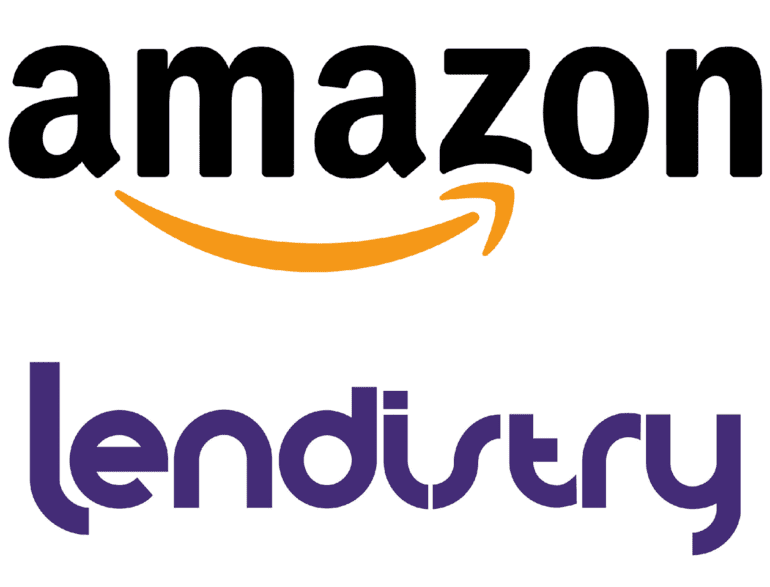At the end of September, Lendistry reached the one-year mark running the Amazon Community Lending program.
Since its launch, the program has loaned more than $35 million to over 800 Amazon sellers surpassing the goal of $10 million during the pilot.
Lendistry CEO Everett Sands said it is time to ramp up to loan more than $150 million in the next three years to small businesses selling in the Amazon U.S. store.
He has said for years the only way to reach small business owners — the 94% that have less than 10 employees — is through smaller community-focused lenders, not big banks.
“When Amazon came to us with the idea for the Amazon Community Lending Program, we knew it would make a significant difference for small businesses that need responsible capital to grow,” Sands said. “What’s exciting about partnering with Amazon is it gives us a chance to expand upon revenue-based lending.”
Revenue-based in the Amazon ecosystem means data
Expanding into revenue-based financing — especially based on the immense data stores of Amazon sellers — helps Lendistry bridge the gap beyond SBA and CDFI lending, Sands said.
Lendistry is one of the only Community Development Financial Institutions (CDFI), Sands said, and that means balancing reasonable rates and reasonable risk management terms.
“If Lendistry goes down, then we can’t continue to provide loans to other entrepreneurs,” Sands said. “So we provide SBA loans of $5 million. We’ve got term loans, commercial real estate, loans, lines of credit.”
That may sound like generic products, but Sands said there are always adjustments to be made. He gave the example of a product Lendistry built for the recessionary period. This commercial loan product enables a property owner to occupy less than 51% of a commercial building.
With access to Amazon Seller data, Lendistry is not only helping support distressed and urban small businesses, but it can build its underwriting models with huge stores of commerce data, Sands said.
Next year, even more
Sands said the loans were two-year terms up to $100K with about a 9% APR in the past year. However, he said that raising interest rates brought up the APR more than average and that their normal rate would be 7.5%.
“Now, we were only supposed to do $10 million; we did $35 million. We beat all the numbers, but the point was to make sure we had application success by going through different iterations and adding different tweaks to the process,” he said.
In the new program expansion announced at the end of September, Lendistry and Amazon laid out new terms. Loans provided by Lendistry will range from $10,000 to $250,000 with terms of up to five years.
“We’re going to go up to $250,000 because the interest rates are rising. The APR will go up to 11.99 now,” Sands said. “We’re going to keep expanding upon that, so the payment plan should keep iteratively improving in both the process and the product.”
Individual sellers account for more than half of all units sold in Amazon’s stores. Small businesses approved for a loan from Lendistry through the Amazon Community Lending program can use these funds to grow their business in Amazon’s U.S. store and to cover other strategic business needs, like staffing and operations, inventory, product development and manufacturing, and marketing.
Advocating for more
An Avid Small Business Finance Advocate, Sands appeared before the House Economic Disparity & Fairness in Growth Committee with a written guide to the best ways representatives could help small businesses.
Lendistry has lent $8 billion since its inception. During the pandemic, Lendistry was in the top eight PPP lenders in 2021 after petitioning the SBA Association to allow them to give out higher amounts.
Sands sees the lending industry on a long collision course with fintech, and he told representatives so. However, he said after working out the process with Amazon and proving Lendistry has what it takes to lend well, they will work up to larger amounts and bigger goals in the future.
“I think that companies like Lendistry: we’ve got to be responsible to build more scalable, more efficient technology,” he said. “Then we have to turn around and reach back to our CDFIs, mission-based lenders, chambers of commerce, and figure out ways either maybe a private label, white label, figure out ways to include them in this process.”
When Lendistry started 10 years ago, there were 10,000 community banks in America. Now there are a tenth as many and nothing to replace them, Sands said. CDFIs, especially fintech-enabled ones, are the future, he said.
“My theory is about 10 years ago, there were about 10,000 community banks, and now there’s 1,000, and I’m defining community banks as a billion in assets,” he said. “Then, if you took a bank 10 years ago, the average bank size is about $750 million; now it’s $4 billion. So I bring this up to say there’s a lot of run room for CDFIs. There need to be multiple Lendistrys, to try to replace 1,000s of community banks.”
Not a silver bullet
He said that just latching fintech SaaS onto a solution is not the only answer.
“It’s not a silver bullet. I think it was smart of Amazon to say, ‘OK, we can’t do it all; let’s invite a partner,'” he said. “Partnership and community are key; that puts the Community in CDFI. That’s what we’re finding is more successful; if you look at some of the programs that we’ve been running, we’ve been inviting other CDFIs because they might be better, or they might have a language that we don’t speak, or they might be more traction community.
Providing strong infrastructure like call centers and back office underwriting may be Lendistrys forte, but joining together with other institutions is how lending evolves.
Amazon SMB working capital
Since 2011, Amazon has provided loans to small businesses selling in its stores through Amazon Lending. The firm said that an infusion of working capital at the right moment could help sellers succeed.
“At Colsen, we have big ambitions to grow the business but a need for capital to facilitate it was critical,” explains Armando Colimodio, co-owner of Colsen, an e-commerce business based in Miami, Fla.
“By working with Amazon Community Lending, we’ve been able to invest in our business and expand our great product selection through the program’s simple and quick loan acceptance process. We expect to double our sales this year and remain committed to growing our product portfolio.”
The company said in a release that through its partnership with Lendistry, an established minority-led Community Development Financial Institution (CDFI), Amazon can now help reach urban and rural small businesses in socially and economically distressed communities.
“Businesses in our communities are often launched with limited responsible options for funding,” shared Talisha Bekavac, executive vice president of U.S. Black Chambers, Inc. “The Amazon Community Lending program has created a model that helps Black-owned businesses grow and thrive with a minimum loan size of $10,000 and rates at an affordable and competitive level.”
Most of the funds Lendistry has historically disbursed have gone to traditionally low-to-moderate income communities, minority-owned businesses, and other historically disadvantaged business owners and the communities they serve.
“Amazon believes businesses of all sizes should have access to financing, payment options, and funds management tools,” explained Tai Koottatep, director and general manager of Amazon B2B Payments and Lending. “The Amazon Community Lending program was developed to help sellers in socially and economically distressed communities with working capital and one-on-one coaching, education programs, webinars, and classes to help them grow now and in the future.”



